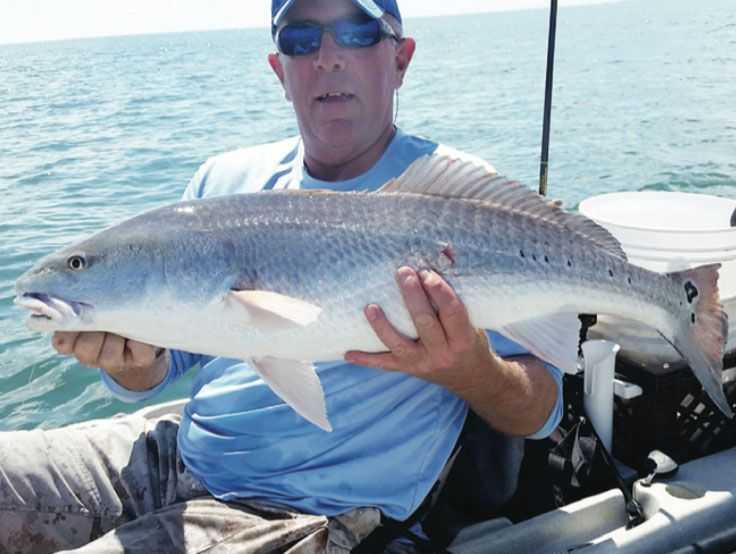As the mullet dwindle, flounder will become frequent catches around Port Canaveral, Sebastian Inlet, and Ponce Inlet. For the fast flowing inlets its best to keep your kayak out of the main flow and most dangerous sections for safety reasons, not to mention it’s very tough to effectively kayak fish those areas.
Targeting the Intercostal lagoons and beaches adjacent to these inlets is a great way to safely intercept the flounder as the push out of our backwater areas and make their way offshore for the winter spawn. Fish with small live baits (fish finder rig), Slayer Inc. SST’s (paddle tail)/jig head, or small bucktail jigs (tip w/strip bait) on drop-offs, around structure, bottom transitions, and sand to rock/ oyster areas to find the concentrations of fish. Slowly work your baits close to the bottom and be ready with the landing net! A great many trophy flounder have been lost by holding their head out of the water. Flounder have a Houdini Ninja magical way of spitting the hook as they shake their head on the surface. To get the flounder in the kayak simply put your landing net a few feet under the water and glide your tasty treat in. Port Canaveral stands as the calmest “inlet” for anglers to kayak and target flounder. However, what Port Canaveral lacks in sketchy moving water, it more than makes up for in large/small boat traffic. It pays to keep an eye out when on the water, and to understand the posted security rules. The fall flounder migration is a great time to test your angling skills on a challenging opponent. Not to mention the flounder is one of our best eating fish on the Space Coast.
We don’t get many “New” things in our Local kayak fishing scene, but that has changed! First, for those with Christmas on the mind, Kayaks by Bo in Titusville has started a gift registry. Now you can pick out the exact kayak or accessory’s you desire and all those that care can buy it for you. Yet another great program from the awesome folks at Kayaks by Bo to ensure a great experience on the Space Coast’s waters. Also, our coastal wave condition data just got a (free) kick in the pants from CheckTheWaves.com. An enterprising (small) private company has managed wading through red tape to bring the Space Coast and beyond an amazing data set produced by several deployed “wave height” buoys close to the coast. Offering a range of vital information on wave height, peak period (dominant swell interval), Sea surface, and sea floor temperature several times an hour for free on their website ensures those of us ocean fishing from beach, kayak, or boats will be happy. As of writing this article the Cocoa Beach Buoy is being tested and will see deployment soon after. With buoys already deployed off Jenson beach and Indialantic Beach this team is just getting started. Several more buoys will be deployed including one off Daytona Beach that could complement the kayak reachable artificial reef recently sunk very well.
Billy Wells of Check the waves said “Real time surf reports, driven by real time data”, and I believe once us fisherman find this resource it will turn to “REEL” time surf reports. The resource is free, not funded by the government and a benefit for all who venture to the ocean. The will have and app. coming soon and are still working on the feel of their website, but the data is flowing and CheckTheWaves.com has quickly become a “favorites tab” for this surfing fisherman. Go check them out.

